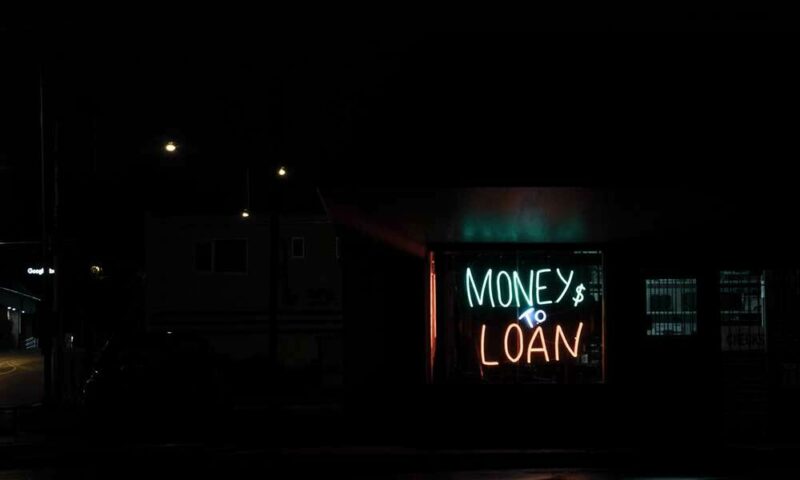Article Excerpt
Mortgage finance is a complex web of lenders and investors that enables more and more people to achieve the dream of homeownership.
Mortgage loans allow people who cannot afford to pay the full purchase price for a home in cash to achieve the dream of homeownership. Without the widespread availability of home mortgages, homeowners would almost certainly be a rare breed in this country. Few people have enough liquid assets — or enough assets, period — to be able to pay for a home in cash. As of the end of 2021, Americans have more than $10 trillion in outstanding mortgage debt, an increase of nearly $1 trillion since 2020.
This raises a question: Where do mortgage lenders get all of this money? Banks don’t keep vaults of cash, gold, or other valuables on hand in order to fund loans. The system of funding for mortgage loans is a bit more complex, and it often involves a rather extensive network of lenders and other parties.

Photo by Brock Wegner on Unsplash
What is a mortgage?
We should begin by defining the term “mortgage.” Simply put, a mortgage is a type of loan used to fund the purchase of real estate.
A “loan” is any transaction in which one party borrows money from another party with a promise to repay it. With most loans, the lender’s only options when a borrower does not pay them back are to notify the credit reporting agencies and begin collection activities. A credit card company, for example, cannot repossess the things you bought on your credit card if you don’t pay your bill.
A mortgage is a “secured” loan, meaning that the house secures the lender’s right to get paid back. If a borrower defaults on their mortgage payments, the lender can foreclose on the house in order to recover the balance of the mortgage loan. The right to foreclosure gives mortgage lenders the confidence to lend enough money to pay for a house or condominium. While most credit cards have spending limits in the four- or five-figure range, mortgage loans tend to start at six figures.

Photo by Daniel Thomas on Unsplash
What is a mortgage lender?
A mortgage lender is a financial institution that makes money available to purchase or refinance homes. Some mortgage lenders are divisions of larger financial institutions, such as banks, while others are independent businesses. When talking about mortgages, the term “lender” can refer to several different entities, and it can get confusing:
A loan originator is a financial institution that provides funding directly to an escrow agent at closing. This could be a lender or a broker that connects borrowers with lenders.
A loan servicer is a company hired by the “owner” of a loan to handle functions like collecting and processing payments. Servicers do not lend money, but since they receive payments they often get confused with lenders.
Many mortgage loans get sold on a secondary mortgage market to other financial institutions or a company like Fannie Mae. A borrower might not even be aware that a different entity now owns their mortgage since they might only interact with the loan servicer. The secondary mortgage market is very important to how mortgages get funded.
How does a mortgage loan get funded?
The money for a mortgage loan might go through a rather lengthy process before it reaches the borrower. All a borrower usually sees is the final step, in which the loan originator sends the money to the escrow agent, who then disburses the money to the seller’s lender, the seller, and others.
Some mortgage lenders use their own cash reserves to fund at least some mortgage loans. This is not as common as it once was, though. Many mortgage lenders now borrow money in order to fund loans.
A bit of terminology might be helpful here. Two main types of lenders issue loans directly to consumers:
Retail lenders offer mortgage loans and other types of loans.
Direct lenders specialize in mortgage loans.
Several other types of mortgage lenders work behind the scenes:
Wholesale lenders provide loans through third parties, including other lenders and mortgage brokers.
Warehouse lenders provide lines of credit to other mortgage lenders. The lender who originates the loan pays the warehouse lender back when they sell the loan on the secondary market.
As we mentioned earlier, the secondary mortgage market is essential to providing lenders with the liquidity to keep making new loans. Congress created Fannie Mae and Freddie Mac for this purpose. They purchase mortgages from originating lenders in the primary mortgage market. They then package them for sale to investors on the secondary market.

Photo by Tima Miroshnichenko from Pexels
Funding A Hypothetical Mortgage Loan
Let’s look at a practical example of how this might work. Suppose a borrower submits a mortgage application to a retail lender. The lender reviews and approves the application. As the closing date approaches, it might get the money for the loan in one of at least two ways:
It can draw from its own cash reserves, which consist in part of proceeds from selling other loans to Fannie Mae or Freddie Mac.
It can draw from a warehouse line of credit, and then pay the warehouse lender back when it sells the loan on the secondary market.
Learn More About Mortgage Financing
Have deeper questions about how mortgages work? The Wood Group of Fairway is available to answer your home mortgage questions and help you find the best mortgage options for your particular situation. See what you qualify for by answering a few quick questions!



